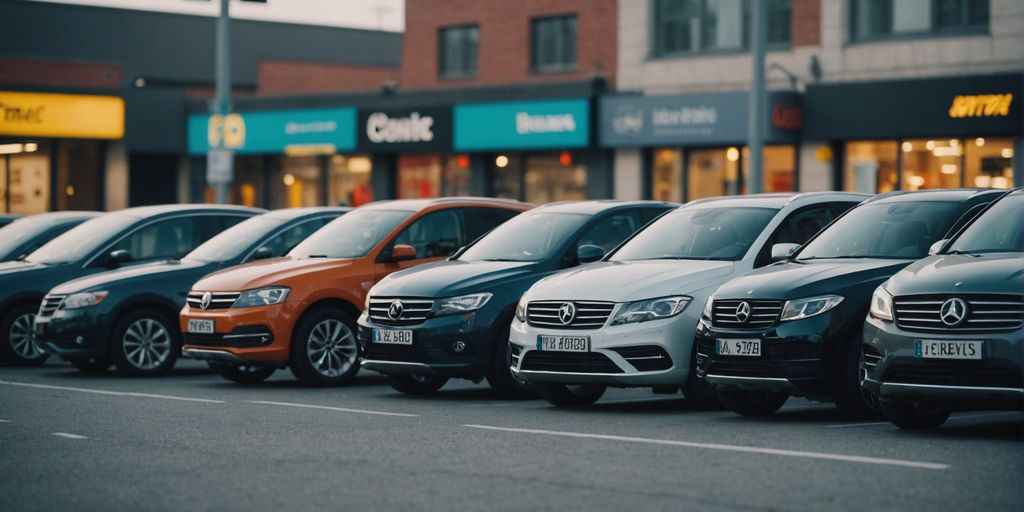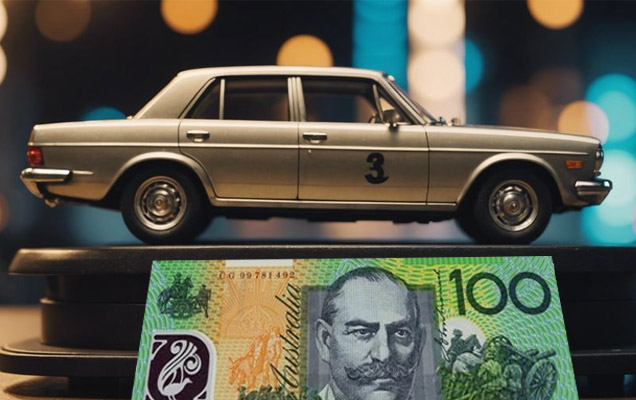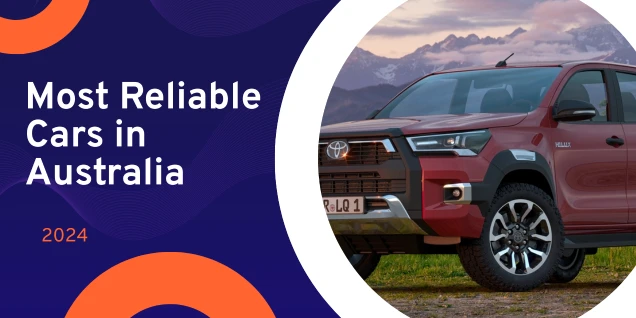The used car market in Australia is booming, with more people opting for pre-owned vehicles over new ones. This trend is driven by various factors, including affordability, availability, and changing consumer preferences. In this article, we will explore the price trends of used cars by body type, covering hatchbacks, sedans, SUVs, and MPVs. We will also delve into regional variations, the impact of fuel types, sales channels, and economic factors affecting used car prices.
Key Takeaways
- Used car prices in Australia are influenced by body type, with hatchbacks, sedans, SUVs, and MPVs showing different trends.
- Regional variations play a significant role in used car prices, with eastern, western, northern, and southern regions each having unique trends.
- Fuel type impacts used car prices, with petrol, diesel, electric, and hybrid vehicles each showing different price trends.
- Sales channels, both online and offline, affect the pricing of used cars, with each channel offering unique advantages and disadvantages.
- Economic factors, including the health of the economy, government policies, and consumer confidence, significantly influence used car prices.
Hatchback Price Trends

Historical Price Trends (2018-2023)
From 2018 to 2023, the prices of used hatchbacks in Australia have seen various changes. Initially, there was a steady rise in prices due to high demand and limited supply. However, by late 2023, prices began to drop. Certain models managed to hold on to their value better than others. This period also saw a shift in consumer preferences, with more people opting for fuel-efficient and compact vehicles.
Forecast Price Trends (2024-2032)
Looking ahead, the forecast for hatchback prices from 2024 to 2032 suggests a mixed trend. While the prices are expected to stabilise initially, they might see a gradual increase towards the end of the decade. Factors such as advancements in technology, changes in fuel prices, and economic conditions will play a significant role in shaping these trends.
Factors Influencing Hatchback Prices
Several factors influence the prices of used hatchbacks in Australia:
- Supply and Demand: A higher demand for compact and fuel-efficient cars can drive prices up.
- Economic Conditions: Economic health and consumer confidence directly impact purchasing power.
- Technological Advancements: Newer models with advanced features can affect the resale value of older hatchbacks.
- Fuel Prices: Fluctuations in fuel prices can make hatchbacks more or less attractive to buyers.
In Australia, you can buy a hatch in all sizes, from tiny city cars to small and mid-size hatches, right up to large luxury models.
Sedan Price Trends
From 2018 to 2023, sedan prices in Australia have seen significant changes. Prices on average are reducing slowly, with the index showing a 3.3% drop month-over-month and a 13.1% drop year-over-year. The index peaked in May 2022 at 167.4. Older sedans, especially those aged 8-10 years, have seen the highest price increases, up by 69% compared to pre-COVID levels.
Looking ahead, the trend for sedan prices is expected to stabilise and trend back upwards in 2024. According to Cox Automotive Australia, dealer-used vehicle selling prices have stopped coming down in 2024, trending slightly upwards again. This upward trend is likely to continue into the next decade, influenced by factors such as economic recovery and consumer demand.
The demand for sedans has been influenced by various factors. While SUVs and other body types have gained popularity, sedans remain a preferred choice for many due to their fuel efficiency and affordability. The market demand for sedans is expected to remain steady, supported by a balance between supply and consumer preferences.
SUV and MPV Price Trends

Historical Price Trends (2018-2023)
Over the past five years, the prices of SUVs and MPVs in Australia have shown a noticeable increase. SUVs under 2 years of age finished July 20% higher on the Price Index than the same age bracket was in December 2019. For those aged 2-4 years, prices were 32.6% higher, while SUVs aged 5-7 years saw a 35.9% increase. The most significant rise was for SUVs aged 8-10 years, which were 40.8% higher. This trend highlights the growing demand for older SUVs.
Forecast Price Trends (2024-2032)
Looking ahead, the prices of SUVs and MPVs are expected to continue their upward trajectory. The slowdown in overall used vehicle price growth was driven by the first decline in used prices for utes and SUVs of 2024, though the pace of the expected decline is gradual. However, the demand for these vehicles remains strong, suggesting that any price drops will be modest.
Consumer Preferences for SUVs and MPVs
The burgeoning popularity of SUVs in the country, due to their high degree of comfort, is one of the crucial Australia used car market trends. Around two-thirds of new vehicle sales in Australia in the year 2022 were SUVs, which is also expected to fuel their usage in the second-hand car market in the coming years. MPVs, while not as popular as SUVs, still hold a significant market share due to their practicality for larger families.
The trend towards SUVs and MPVs is expected to persist, driven by consumer preferences for comfort and practicality.
Regional Variations in Used Car Prices
Eastern Region Price Trends
In the eastern region of Australia, used car prices have shown a steady decline. Prices are also declining, with November 2023 data from Moody's Analytics showing a cumulative decline of seven percentage points since May. This trend is expected to continue into 2024, making it a good time for buyers to find deals on newer models.
Western Region Price Trends
The western region has experienced a different trend. While prices have softened, the decline is not as pronounced as in the east. Factors such as strong new vehicle supply and local economic conditions play a role in this variation. For people looking to buy a used car, you’ll likely find your dollar going further and potentially be able to buy a newer model than you expect.
Northern and Southern Region Price Trends
In the northern and southern regions, used car prices have remained relatively stable. However, there are still some fluctuations based on vehicle age and type. Older used vehicles have seen the biggest proportionate price increases over the past few years, while newer, lower-mileage ones have not increased as much.
The continued drop in used car prices is likely to extend into 2024, providing more opportunities for buyers across different regions.
Impact of Fuel Type on Used Car Prices
Petrol vs Diesel Price Trends
Petrol cars made up almost two-thirds of the total used car market sales in 2023, while diesel was the next most popular. Diesel vehicles, however, are more impacted by rising fuel prices. This has led to a noticeable difference in the resale values of petrol and diesel cars.
Electric Vehicle Price Trends
The used EV and PHEV market is quite volatile due to the smaller number of used models available. The price indexes for these vehicles across different age brackets are not holding up as well as those for combustion-engine vehicles and hybrids. This volatility makes it challenging for buyers and sellers to predict future prices.
Hybrid and Alternative Fuel Vehicles
Green vehicle sales, including hybrid, electric, and PHEV cars, made up less than 4% of the total used car market share in 2023. Despite their lower market share, hybrids tend to have more stable prices compared to fully electric vehicles. This stability is attractive to buyers looking for eco-friendly options without the price swings seen in the EV market.
The market for used hybrid and alternative fuel vehicles is growing, but it still represents a small fraction of the overall used car market. This niche market is expected to expand as more consumers seek environmentally friendly options.
Sales Channels and Their Effect on Pricing

Online Sales Channel Trends
Online sales channels are becoming increasingly popular in the Australian used car market. Rapid digitalisation has made it easier for buyers to browse through inventories without leaving their homes. These platforms often provide detailed vehicle photos, price comparisons, and special offers that are not available in physical stores. This convenience is driving more consumers to purchase used cars online.
Offline Sales Channel Trends
Offline sales channels still hold a significant market share. They offer the advantage of allowing buyers to inspect the condition and performance of second-hand cars in person. This hands-on experience can be crucial for many buyers who prefer to see and test the vehicle before making a purchase.
Comparative Analysis of Sales Channels
The choice between online and offline sales channels often depends on the buyer's preference for convenience versus the need for a hands-on experience.
Economic Factors Affecting Used Car Prices

Impact of Economic Health
The health of the economy plays a crucial role in determining used car prices. When the economy is strong, people have more disposable income, which can drive up demand for used cars. Conversely, during economic downturns, demand may decrease as consumers tighten their budgets. Economic factors such as fluctuations in fuel prices, interest rates, changing consumer preferences, and supply factors can also affect the cost of used cars.
Government Policies
Government regulations and policies can significantly impact the used car market. Policies related to emissions, safety standards, and import regulations can affect the availability and pricing of used vehicles. For instance, stricter emissions standards may reduce the number of older cars on the market, potentially driving up prices for compliant vehicles.
Consumer Confidence
Consumer confidence is another key factor influencing used car prices. When consumers feel optimistic about their financial future, they are more likely to make significant purchases, including used cars. On the other hand, if consumer confidence is low, people may delay buying a car, leading to a decrease in demand and potentially lower prices.
The availability of supply to meet market demand is highly unpredictable because the used car market depends on imports, car owners selling their vehicles, and replacement buyers. This uncertainty can impede the growth of the second-hand car industry.
Summary Table
The prices of used cars are influenced by many economic factors. From supply and demand to interest rates, these elements can make a big difference in what you pay. If you're looking to get the best deal on a used car, it's important to stay informed. Visit our website to learn more about how these factors affect car prices and make a smart purchase.
Conclusion
In summary, the used car market in Australia is on a steady rise, with different body types showing unique trends. Hatchbacks, sedans, SUVs, and MPVs each have their own patterns in terms of popularity and pricing. The market's growth is driven by factors like affordability, availability, and changing consumer preferences. As we look to the future, it's clear that the used car market will continue to be a significant part of Australia's automotive landscape. Keeping an eye on these trends can help buyers and sellers make informed decisions.
Frequently Asked Questions
What is the outlook for the used car market in Australia?
The used car market in Australia is expected to keep growing. It's driven by things like affordability, more cars being available, and what people like to buy. By 2033, the market might reach USD 77.94 billion.
How have hatchback prices changed from 2018 to 2023?
Hatchback prices have seen ups and downs from 2018 to 2023. The prices were influenced by the economy, demand, and the number of hatchbacks available.
What factors will influence hatchback prices in the future?
Future prices for hatchbacks will depend on things like the economy, how many are available, and what people want to buy. Government rules and fuel prices will also play a part.
Why are used SUVs and MPVs popular in Australia?
Used SUVs and MPVs are popular because they offer more space, comfort, and are seen as safer. Many families and people who like outdoor activities prefer them.
How do prices differ between petrol and diesel cars?
Petrol cars are usually cheaper than diesel cars. Diesel cars cost more because they are often more fuel-efficient and last longer.
What impact does the online sales channel have on used car prices?
Online sales channels make it easier to compare prices, which can lead to better deals for buyers. They also increase competition among sellers, which can drive prices down.





